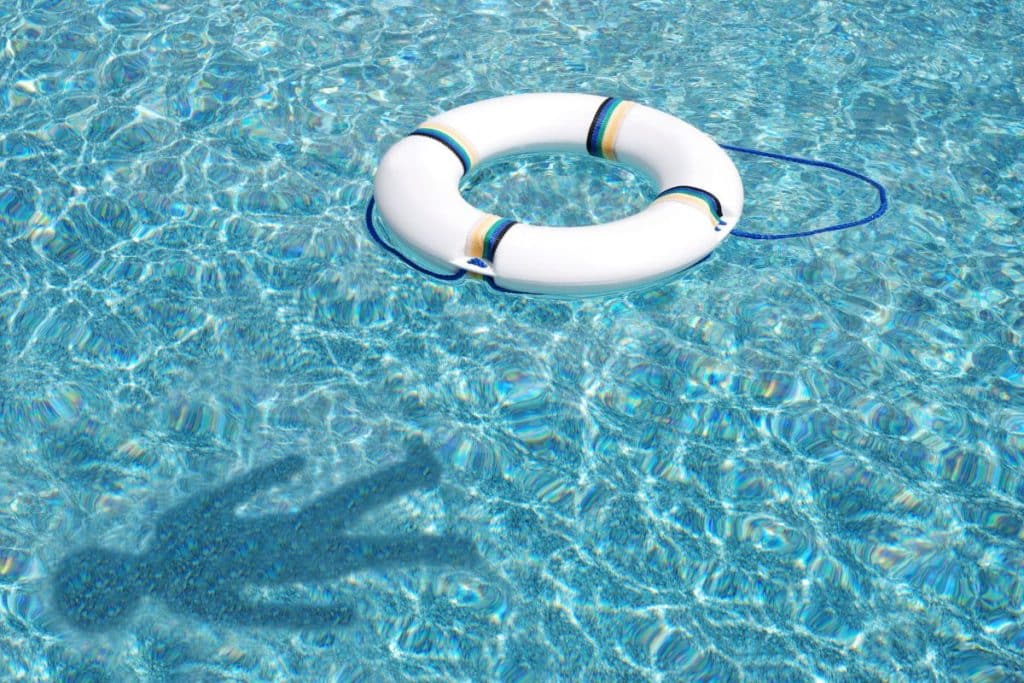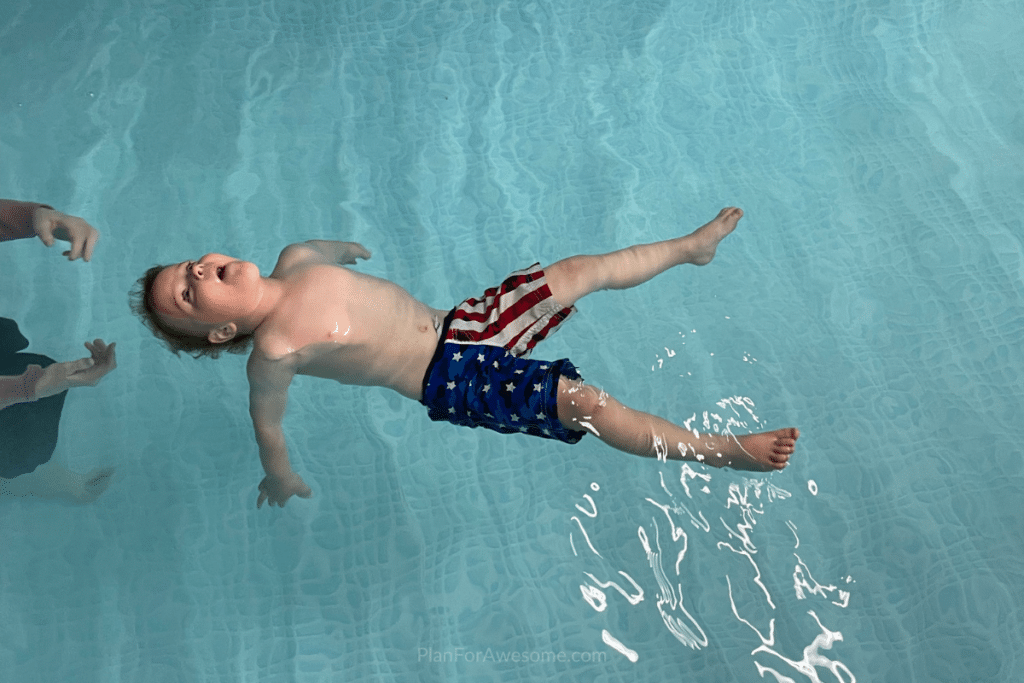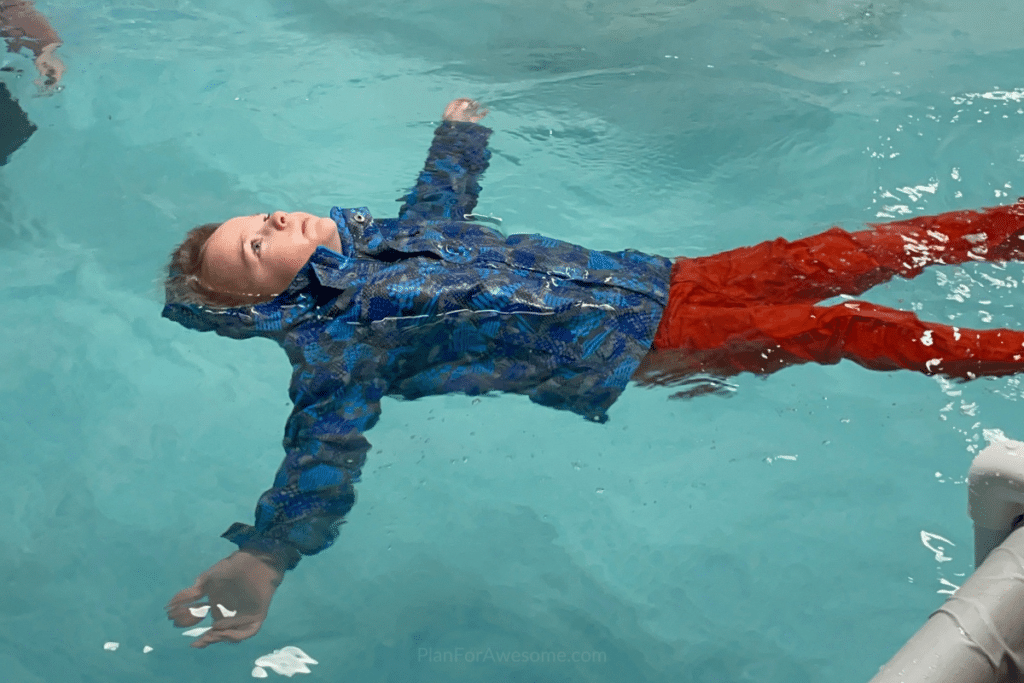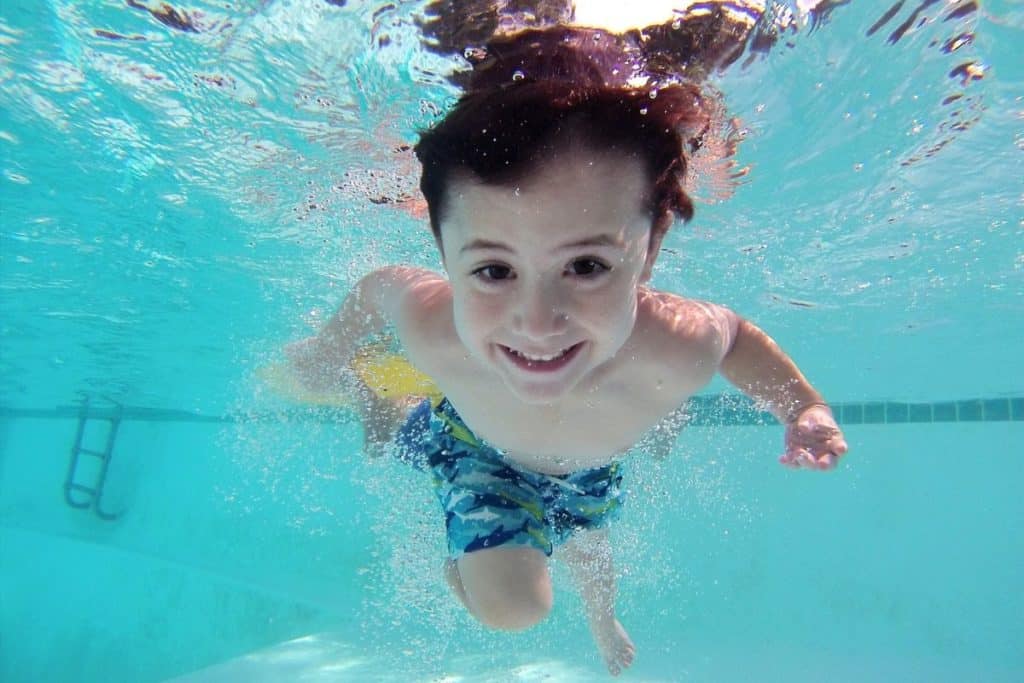
Why I love this legit online CPR Course
You just never know when you’ll be faced with an emergency situation. These online CPR & First Aid courses from Thrive Training will help you be prepared.

Knowing what to be aware of with kids and water is essential year-round, but knowing drowning safety tips is especially imperative in the summer months when most of us are around swimming pools, oceans and lakes more frequently.
Drowning is the leading cause of death in children under the age of 5. And 80% of the time, it happens when kids are NOT swimming.
**This post contains affiliate links, which means if you click on a link and make a purchase, I may make a small commission at no extra cost to you.
Drowning happens most often during transition times, when you think that no one is swimming. It also happens to loving, attentive parents.
I don’t have toddlers. My kids can swim. Yet I was still blown away by how much I learned from an episode on drowning safety tips on one of my favorite podcasts!
Episode 236 of the 3 in 30 podcast is one of the most impactful podcasts I have ever listened to. In it, Nicole Hughes shares the story of how her son drowned, and she gave 3 actionable takeaways to help educate parents and caregivers about this topic.
“If everybody’s watching the pool, then nobody is watching the pool”– just one snippet of the powerful wisdom that Nicole shares.
I cannot recommend this podcast episode enough. It is just under 40 minutes long, and you can 2X it in the podcast app.
Please, please listen to this podcast episode if you:
Nicole talks about the incorrect assumption that accidental drownings only happen to families whose parents are distracted, selfish, etc. Her vulnerability in sharing her story is a testament to the type of parent she must be.
Everyone needs to know the statistics and steps they can take to prevent drowning.
In the podcast episode, Nicole mentions ISR which is short for Infant Swimming Resource (aka infant self rescue). My sister-in-law enrolled their 2, 4, and 6 year old boys in the program. It was amazing to see them go from total panic on day one, to complete confidence in just a couple of weeks.

By the time they finish the program, they can successfully perform this completely clothed (we’re talking winter coat and boots) and without warning (getting “accidentally” knocked into the pool, flipped upside down, and other disorienting positions).

These are examples of non-swimming scenarios that Nicole refers to. If your child can only swim when they put on goggles and calmly enter the water via stairs and a handrail, then they cannot really swim.
ISR lessons gave my sister-in-law confidence that her kids can save themselves in the event that they are knocked into a pool by a rambunctious dog, or accidentally fall into a canal while trying to retrieve a soccer ball.
It is a commitment – the lessons are short, but happen 5-6 days per week. And it can be expensive.
But what an incredible gift to give your children- the knowledge, skills, and confidence to save their own lives.
These lessons were my nephews’ birthday present last summer. Now that is an invaluable gift that will never be put in the donation pile!
Brandon Doerksen, the CEO and co-founder of Thrive Training Institute said this:
“Drowning is a silent emergency and that’s why it’s crucial to have water watchers whose sole responsibility is to have eyes on the swimmers.“
We might not all have access to ISR Lessons, or children that are young enough to be enrolled. But we all have the ability to be informed and empowered in these 4 areas:
Hopefully you just had an “aha” moment when you noticed that half of the areas listed take place during those risky transition times, not while actually swimming.

Even when we are informed and are watchful, accidents still happen.
That is why Thrive Training Institute makes it SO ACCESSIBLE to become CPR certified 100% online. They created their courses with busy families in mind. I absolutely love how easy it is to sit at the computer and learn these life-saving skills in the comfort of my own home.
To learn more about their online CPR certification course, click here.
Nicole Hughes’ experience was devastating and so heartbreaking to listen to. I am so grateful she was courageous enough to share it, to help people like you and me to prevent further tragedy.
Even if we are never in a position where we are directly involved in keeping a child safe around water, knowing the information and sharing it with others could be life-saving.
So what can you do?
Share this post!

You just never know when you’ll be faced with an emergency situation. These online CPR & First Aid courses from Thrive Training will help you be prepared.

How to get an emergency supply of medication without a prescription. Jace is a great way to keep medicine for your family in your emergency preparedness plan.

Why you should schedule an emergency preparedness weekend every 6 months, and what you should be doing, reviewing, rotating, and maintaining. Free printable checklist!
